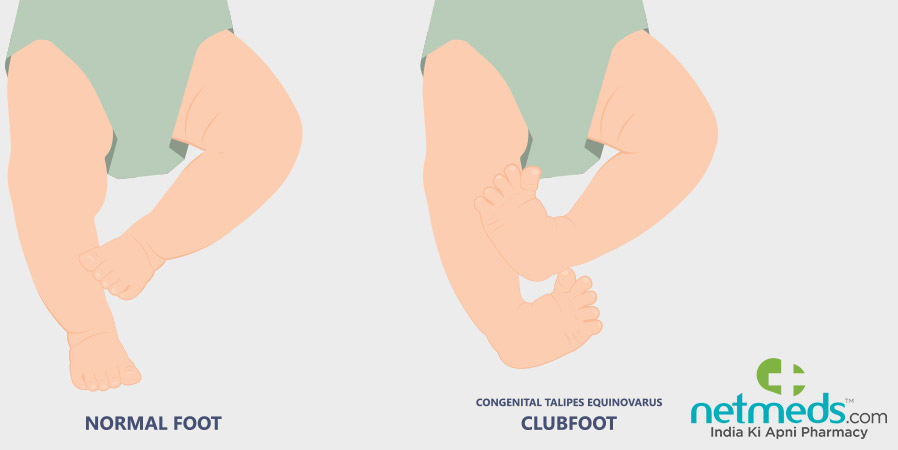CTEV or congenital talipes equinovarus is a congenital disorder characterized by deformities in the legs. The deformities are cavus, adduct, varus and equinus. This deformity can occur in one or both legs.
CTEV is the most common form of deformity in the musculoskeletal field. In Indonesia itself, the incidence of CTEV ranges from 0.76 to 3.49 cases per 1000 births. In Europe, CTEV occurs 2 times more in men compared to women. A family history of CTEV will increase the risk of CTEV.

Etiology of CTEV
The cause of CTEV is not yet known for certain, but CTEV is not caused by embryonic malformation, because CTEV occurs in the second trimester of pregnancy. Several theories have been proposed regarding several factors that influence the occurrence of CTEV, such as abnormalities in joint or bone formation, uterine restrictions, neurological development, distal limb blood vessels, connective tissue, and developmental delays.
Types of CTEV
Some abnormalities that occur in patients with CTEV are:
- Tarsal bone malposition
- Atrophy of the calf muscles
- Shortening of the legs
Malposition of the tarsal bones will affect the shape of the tarsal joints. The forefoot is in a pronated position and the plantar arch will be more curved. This will increase the flexion of the metatarsal bones on the lateral-medial side.
The gastroc, soleus, tibialis anterior, tibialis posterior, and flexor digitorum longus muscle groups appear to exert excessive traction. The muscles in the foot affected by CTEV are also smaller than those in healthy feet. At the distal end of the gastroc muscle, there is more collagenous connective tissue and it usually extends to the Achilles tendon.
The ligaments on the medial and posterior sides of the tarsal joints and the ankle joint are very thick and stiff. This causes the foot to remain in an equinus position with the calcaneus inverted and the navicular bone in adduction.
On microscopic examination, newborns with CTEV have more collagen fibers and cells in their ligaments compared to normal babies. The collagen fiber knots have a wrinkled (wavy) pattern. This pattern allows the ligaments to stretch. Careful stretching will not have a negative impact on the baby. This stretching ability allows CTEV to be corrected manually.
The Role of Physiotherapy in CTEV
The Role of Physiotherapy in CTEV
- Stretching and Strengthening: Specific exercises can help improve the flexibility and strength of the affected muscles.
- Manual Manipulation: A physiotherapist can perform manual manipulation to help guide the foot into the correct position.
- Assistive Device Adjustment: A physical therapist can assist in the use of assistive devices, such as leg braces or foot wraps, to help improve posture and mobility.
- Education and Home Exercises: Provide instructions to patients and families about home exercises and care that can help maintain therapy results.
With appropriate intervention, physiotherapy can help improve the function and quality of life of patients with CTEV.
Also read: Memiliki Kaki Datar/ Flat foot/ Pes Planus, Berbahaya atau Tidak?
Reference :
- Mustari, M N., Faruk, M., Bausat, A., Fickry, A. Congenital talipes equinovarus: A literature review. Ann Med Surg (Lond). 2022 Sep; 81: 104394. Published online 2022 Aug 18. doi: 10.1016/j.amsu.2022.104394 https://pubmed.ncbi.nlm.nih.gov/36147065/
- Munjewar, S., Somaiya K J., Boob, M A., Phansopkar, P. The Effectiveness of Physical Therapy Intervention in a Seven-Year-Old Child With Congenital Talipes Equinovarus: A Case Report. Cureus. 2023 Nov; 15(11): e48423. Published online 2023 Nov 7. doi: 10.7759/cureus.48423
- Ezeukwu, AO., Maduagwu, SM. Physiotherapy management of an infant with Bilateral Congenital Talipes Equino varus. Afr Health Sci. 2011 Sep; 11(3): 444–448.





